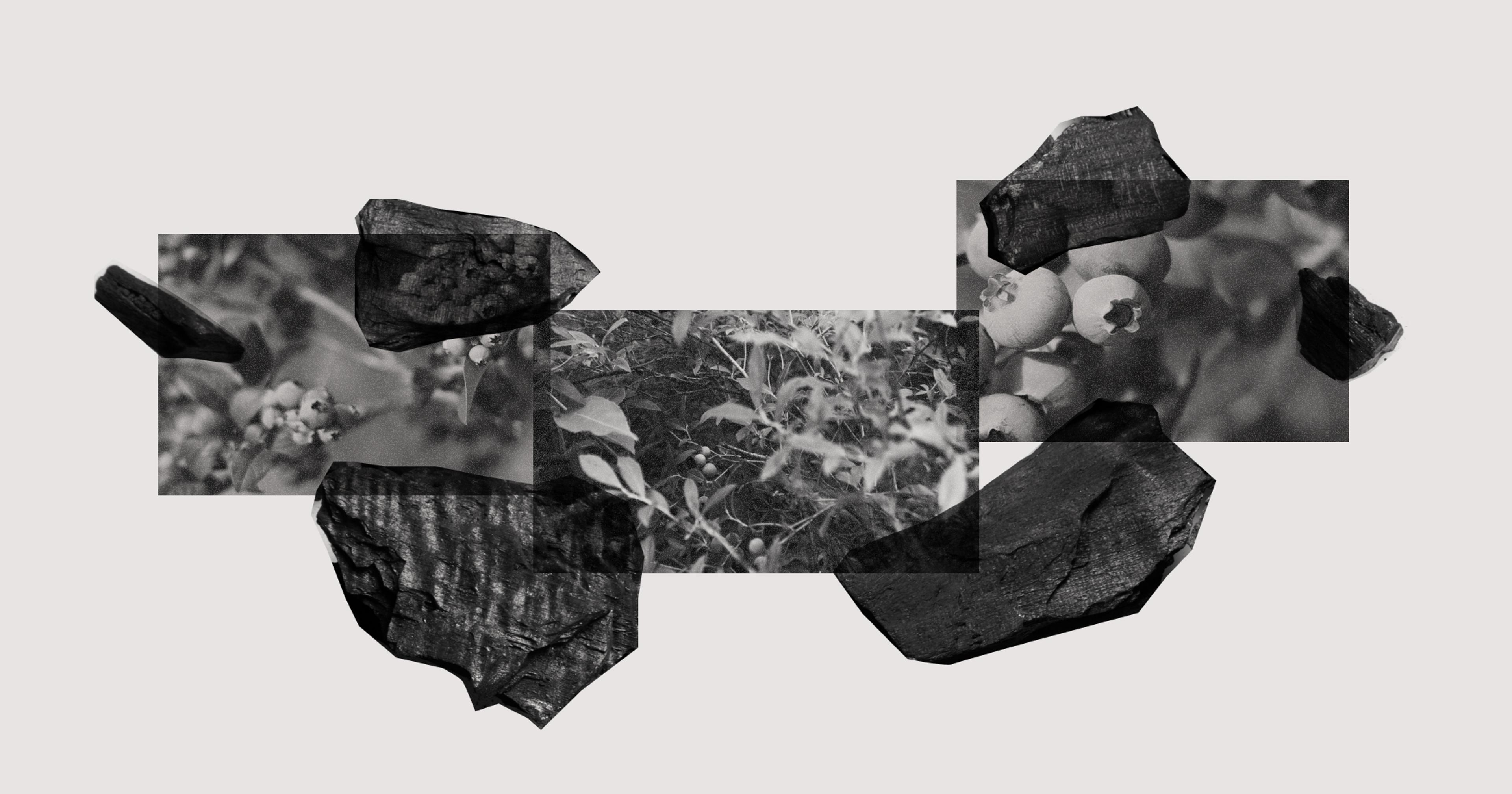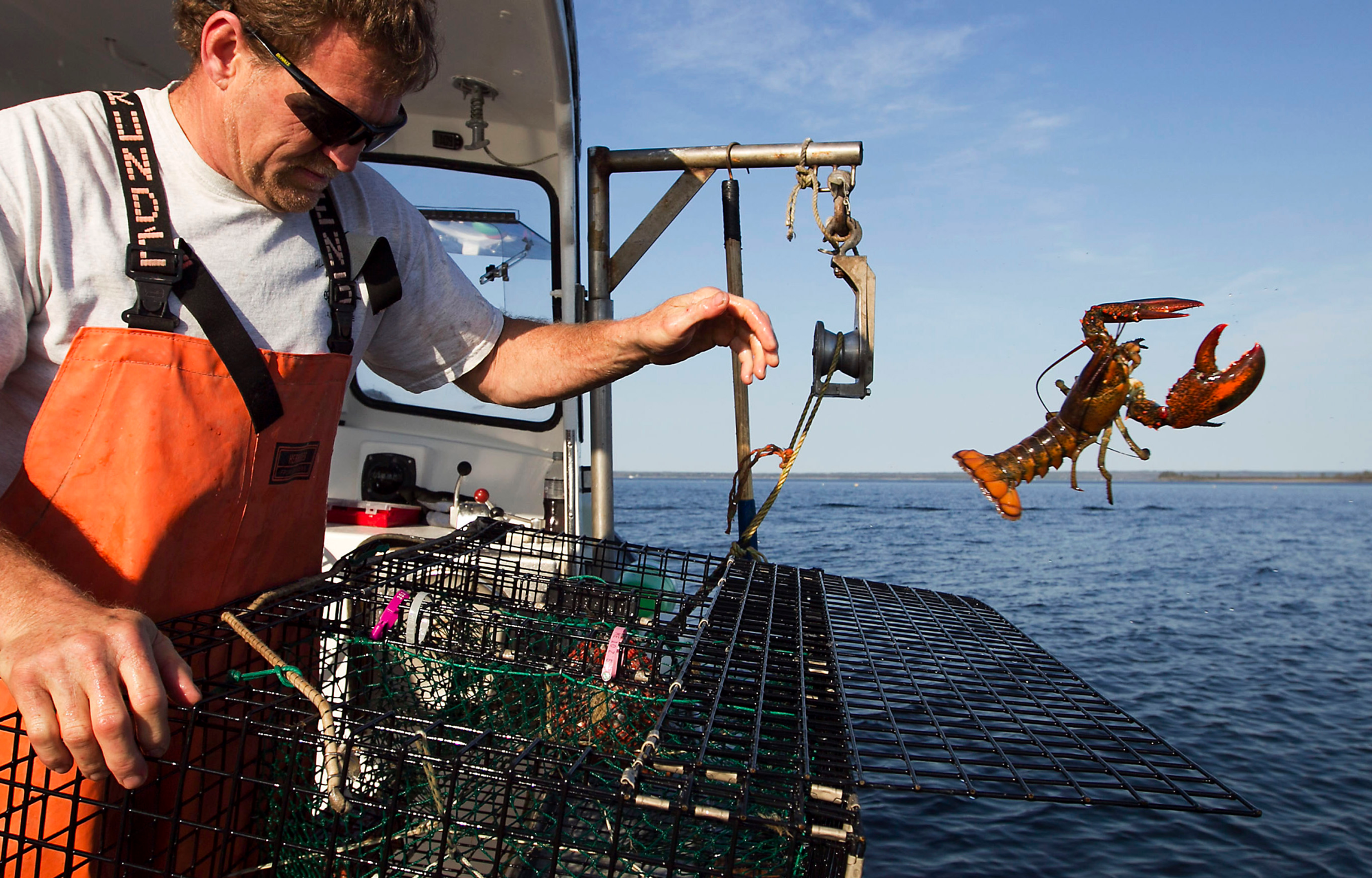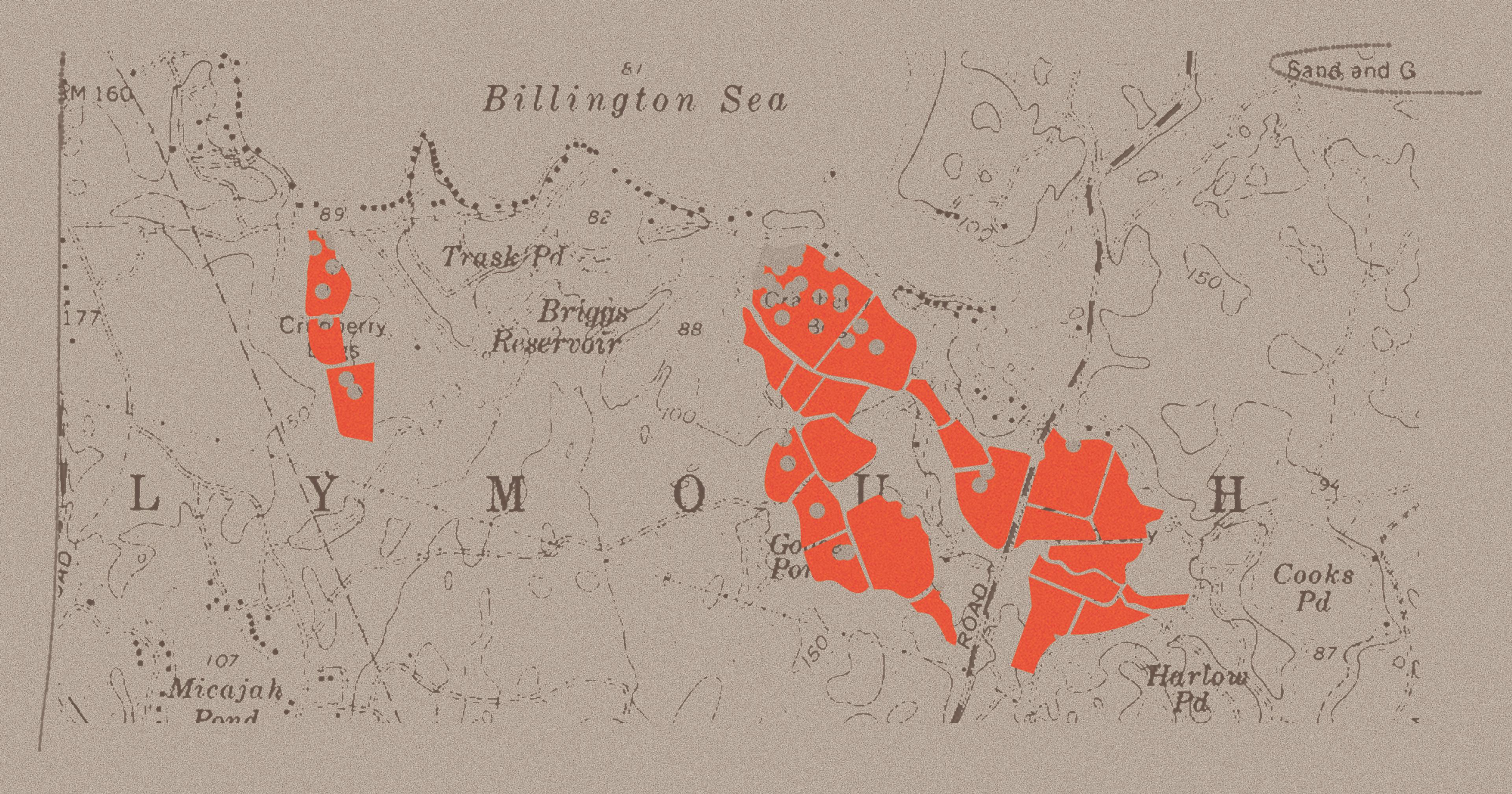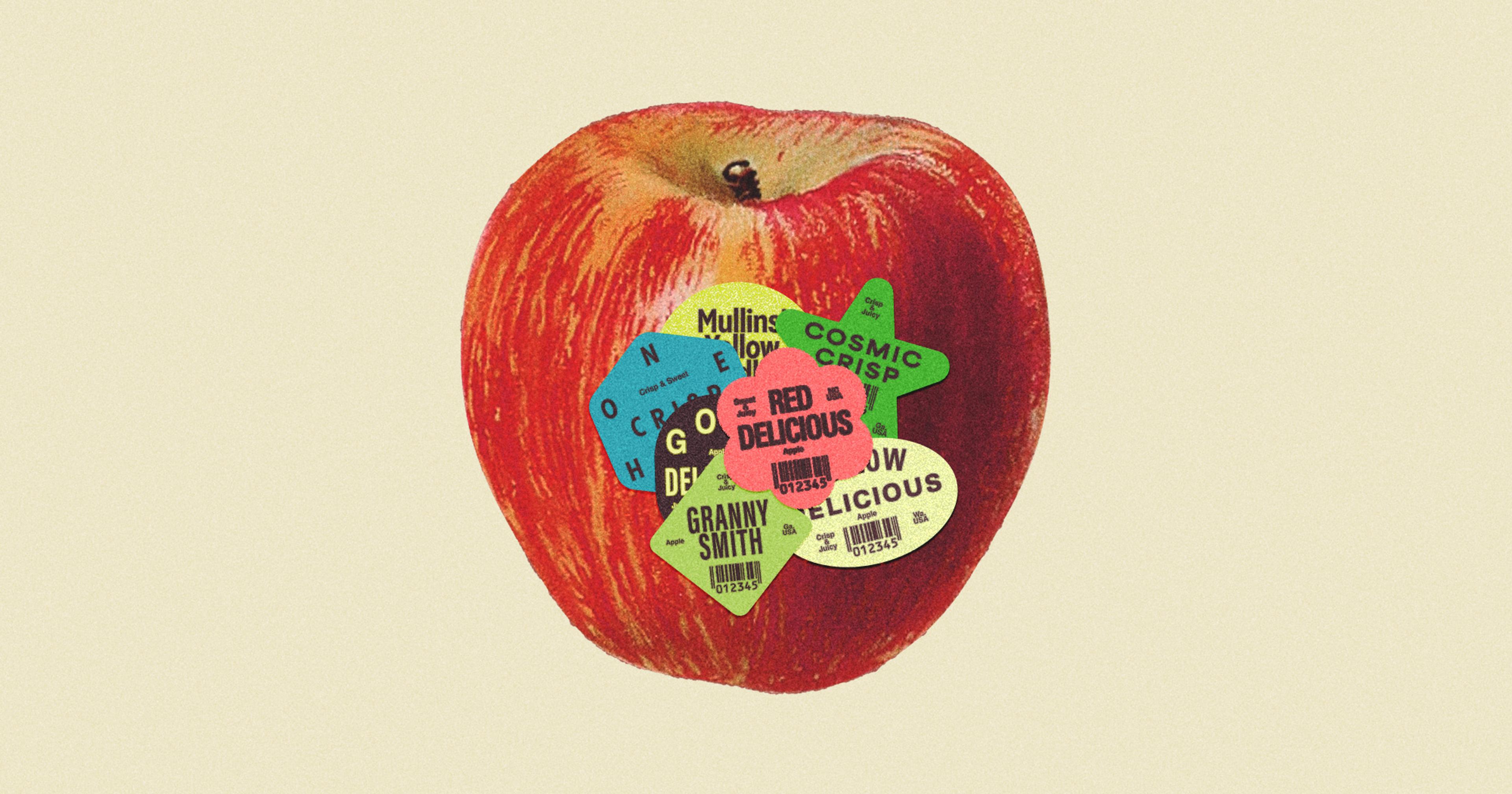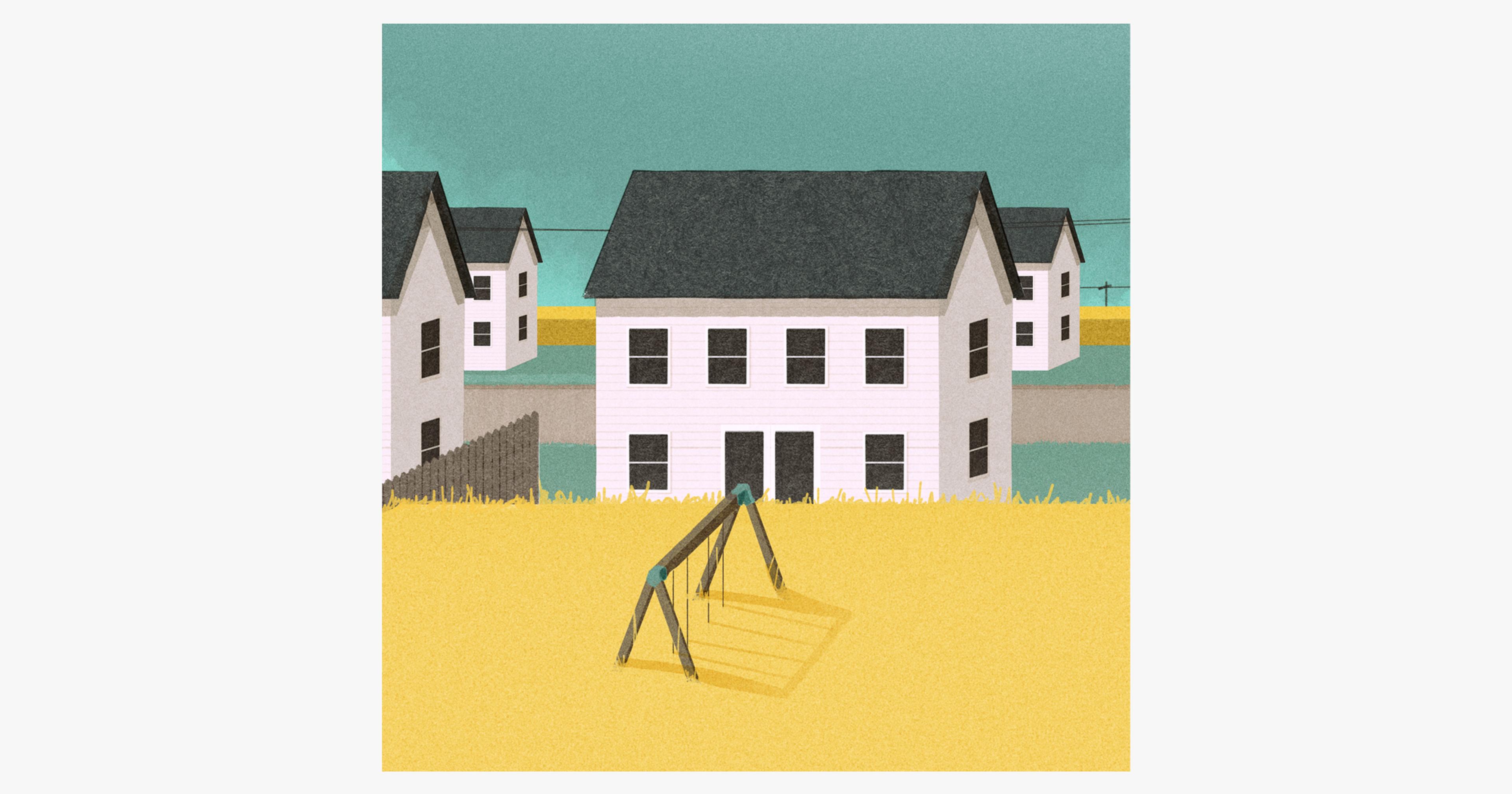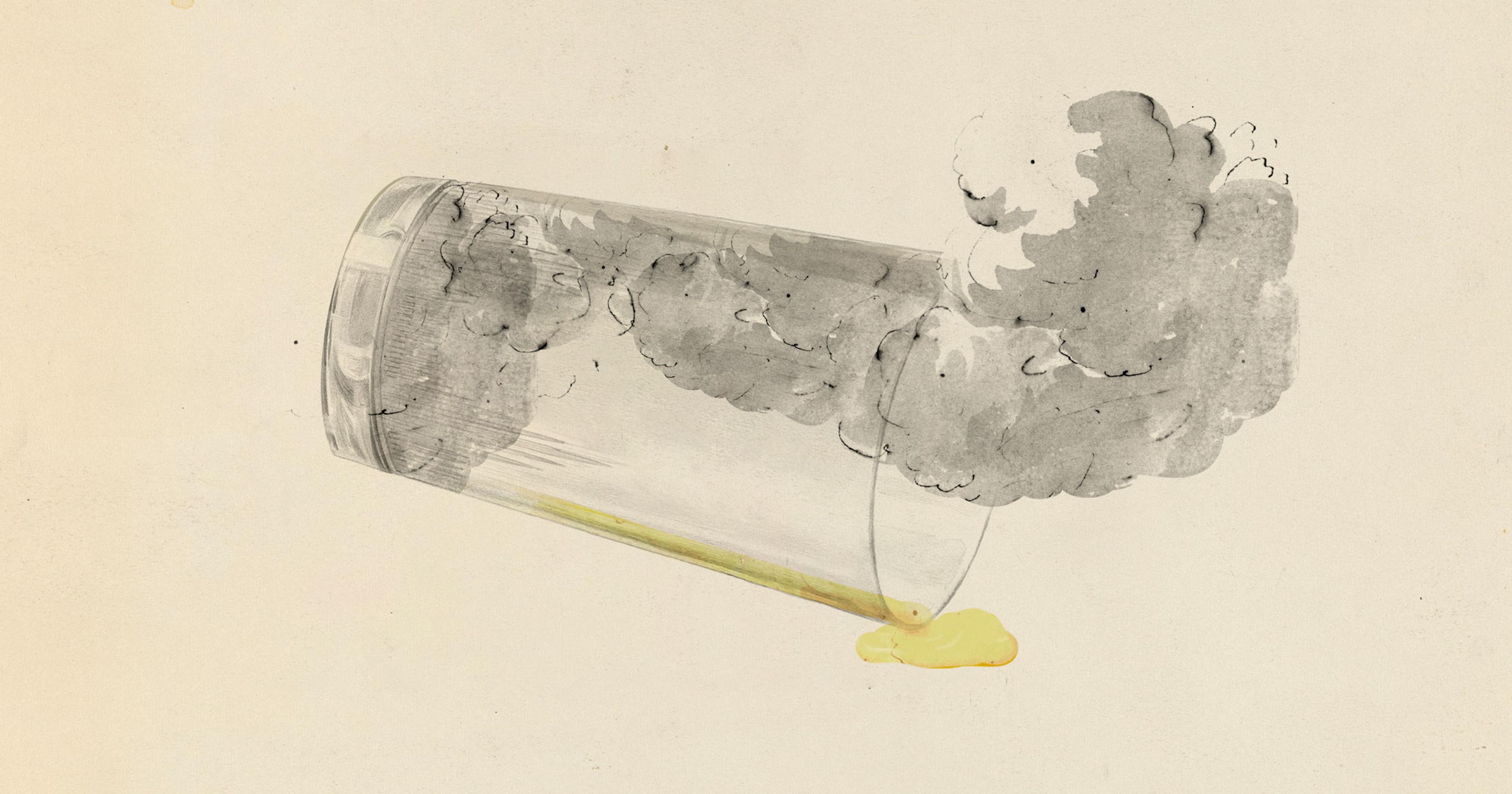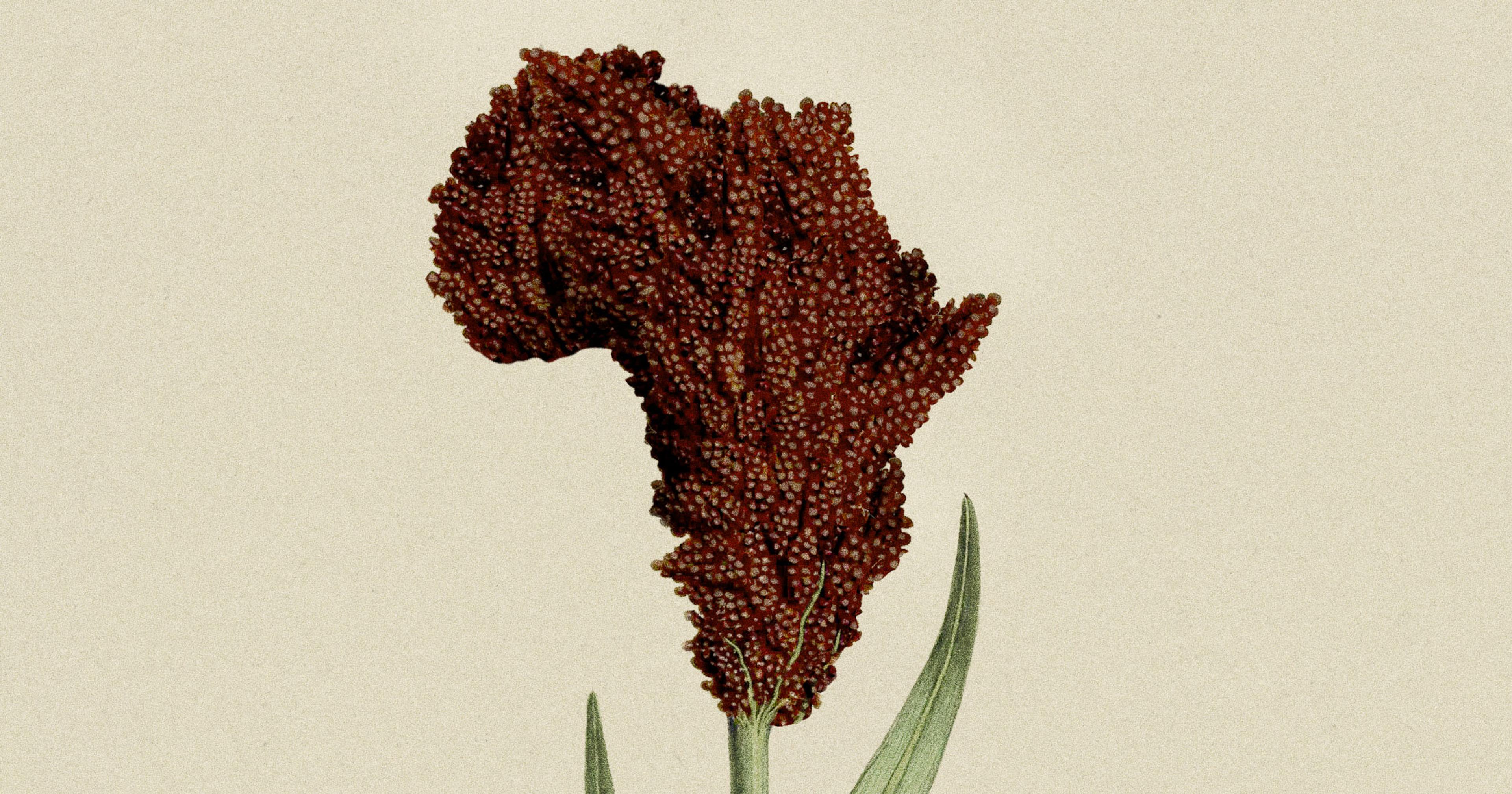Battered by climate change and cultivated competitors, Maine’s wild blueberry growers stare down an existential crisis.
Courtney Hammond is surrounded by color. In the late afternoon sun, he stands on a dirt path that divides gently sloping hills draped in pale greens, soft pinks, and rich burgundies — wild blueberries in full bloom. Each shade represents one of hundreds of different plants with its own genotype, forming a vibrant field buzzing with pollinators. It doesn’t look much like a cultivated blueberry farm, or any other agricultural land, for that matter.
It’s late May in coastal Maine, and the plants are speckled with white blossoms that will become this year’s crop by mid-summer. Each one rises up to shin height and brushes against its neighbors to form a patchwork quilt that helps define the region’s landscape. When glaciers receded from Maine and Canada’s Maritime provinces some 10,000 years ago, the blueberries took root in the acidic, rocky, virgin soils they left behind. The perennial shrubs have been growing on this destitute land ever since.
To the people of Maine, the wild blueberry is something much more than a fruit. It’s a natural resource, a point of pride, a stubborn and resilient companion that has reflected Mainers back to themselves for generations.
But for small growers like Hammond, who has been walking and working the fields at Lynch Hill Farm since he was little, it’s become harder and harder to turn a profit as obstacles mount. Most blueberry fields are unirrigated, so drought can wreak havoc, and late frosts kill blooms before they become berries. Both are being exacerbated by climate change, according to Lily Calderwood, wild blueberry specialist at the University of Maine, whose research program supports the industry. In good years, the total crop surpasses 100 million pounds, most of it grown here in Washington County. In bad years, it’s less than half that.
The shifting blueberry market has complicated matters further, owing largely to the cultivated or high-bush blueberry, which can be grown in a range of climates. The wild or low-bush berry is smaller, sweeter, and more varied in flavor, thanks to all those genotypes, and it has twice the antioxidants that turned blueberries into a superfood in the late 1990s. But high-bush production more than doubled in the 2010s, flooding the freezer aisle — home to 99 percent of all wild blueberries — and making it harder for Maine’s growers to get a fair price. The U.S. supplies roughly one-quarter of what is now a million-ton global supply. Canada’s support for wild blueberry expansion, meanwhile, has added even more pressure on Maine’s growers.
Last year, growers made just 38 cents per pound — less than the 60 or 70 cents it costs to produce.
For Hammond, a past president of the Maine Farm Bureau and member of the advisory committee for the Wild Blueberry Commission of Maine, the headwinds have become nearly unbearable. He’s been picking blueberries since his father quit teaching to take over the family farm and started dragging his kids along for the harvest. Like many of Maine’s independent blueberry growers, most of whom have a connection to the industry that goes back generations, Hammond may as well have been born with a rake in his hand. Unlike so many others, he still uses one — picture a handheld dustpan with comb teeth — to harvest each August. But at 57, he’s worried about who will take over when he hangs it up. More than that, he’s worried about whether hundreds of other small-scale growers will be able to persist through the challenges they all face together.
In a place where wild blueberries are more culture than crop, Hammond’s weary outlook reflects a broader concern about the future of the fruit that has helped sustain the region’s rural communities for decades.
“I’m fighting to keep the industry alive because it’s a way of life down here,” Hammond says, “but it’s not like it was.”
When Hammond’s grandparents bought this field in Milbridge in the early 1950s, they joined a lineage that dated back thousands of years to the Wabanaki tribes, who first learned to burn the land after a blueberry harvest to restart the plants’ two-year growth cycle. The tribes ate the berries fresh or dried them in the sun to offer sustenance through winter, and used them as both medicine and as dye for woven baskets. When settlers arrived in the 17th Century, they too relied on blueberries as a valuable food source. During the Civil War, blueberries were shipped out to support the Union. By the late 19th century, canning made preservation possible and commercial expansion followed. Soon, nearly every town around here had a cannery and managing blueberries became a viable way to make a living. These days, though, it’s far from a sure thing.
The vast majority of the 500-odd Maine growers sell their crop to one of five processors, which sort, clean, and freeze the berries to be shipped around the country. Their parents and grandparents could earn an income doing it, but most are now sustained by other work. Adjusting for inflation, the price they receive per pound has fallen by half in the past two decades, according to Eric Venturini, executive director of the Wild Blueberry Commission. Last year, growers made just 38 cents per pound — less than the 60 or 70 cents it costs to produce. That imbalance has led some to cease managing the crop altogether, rather than pour in resources just to finish in the red. If it continues, Hammond anticipates a “massive exodus” of independent growers, some of whom have already begun turning their land into solar fields or gravel pits.
On a drive around Lynch Hill’s scattered properties, Hammond points out some blueberry land he leased until everything went upside-down. Since 2016, he says, he’s only made money once. Otherwise, he’s hoped to break even. In response, he’s let more than 50 of his 300 acres go. Unless someone else steps in, the land will soon be overgrown by other species. Within a decade, much of it will be filled in by birch, cherry, and pine trees. It will return to the successional forest it would have been without human intervention.

Courtney Hammond gives a tour of the wild blueberry fields at Lynch Hill Farms.
·Kat Arazawa
“We’re at a turning point,” Venturini said. “The industry is changing. The question is whether it can change fast enough to be the version of the industry that we hope it will be.”
Calderwood, the extension specialist, is among those focused on helping growers adapt to all that change. When she came to Maine after studying hops and grains at the University of Vermont, she had never seen the fields known as the barrens — thousands of rolling acres of blueberries studded with rocky outcroppings. At first, managing them looked like an awful lot of work for little reward. “Immediately, I was like, ‘Why are you doing this?’” she says. But after meeting the people committed to preserving the fruit and its place in Maine’s culture, she quickly understood.
“For a lot of people, it’s not about the economics,” she says. “It’s about their care for the land and managing it over time — being a steward of that property.”
At a late-afternoon workshop at the headquarters of wild blueberry processor W.R. Allen in Orland, an hour west of Milbridge on Route 1, Calderwood and her colleagues show a group of growers how to calibrate their boom sprayers to get the most out of their inputs. The conversation drifts toward the cold, wet weather that’s been hampering pollination. Beehives are trucked into the fields each spring to support the process — among growers’ most significant costs — but the bees haven’t been flying. It takes several visits for a blossom to become a berry, and the window for pollination isn’t open long, so any delay adds anxiety about this summer’s crop. The last thing a wild blueberry grower needs is more anxiety.
Just down the road at a research field, Calderwood is studying the potential of mulch to help alleviate some of the stress felt by both growers and their plants. Spot mulching has been known to encourage wild blueberries to expand into bare patches by growing their subterranean rhizomes. Now, Calderwood is exploring whether broader application can help retain soil moisture. Drought has become more common in recent years, nearly biannual for the past decade. If it hits at the wrong time, it can wipe out entire fields. The same is true of late frost. “We’ve had years when you couldn’t pick a blueberry to save your soul,” Hammond says.
Adding to the volatility, some blueberries, confused by changing weather patterns, have started blooming in the fall. The unseasonal flowers die in the winter, limiting a plant’s fruit production the following summer, according to Brogan Tooley, a senior agroecologist who leads climate-related research at Wyman’s, a 150-year-old processor that buys from growers and also manages around 10,000 of Maine’s 47,000 total acres of blueberries. (The company has expanded into a wider range of frozen fruits as well.) Tooley is collaborating with University of Maine researchers to better understand how shifting weather patterns are affecting blueberry production — and to develop solutions.
“We’ve had years when you couldn’t pick a blueberry to save your soul.”
“Even growers I work with who three or four years ago would’ve said climate change doesn’t exist, they see it,” she says. “It’s in their backyard and they’re dealing with it on a daily basis now.”
Research shows the barrens are warming faster than the rest of the state, and growers have no choice but to respond. For decades, harvest began in the first or second week of August and lasted about a month, but last year Wyman’s began on July 20, Tooley says. The snowpack that protects blueberries from the elements in winter is also decreasing, which could inhibit their development and cut down yields. For growers, it’s become increasingly difficult to rely on traditional knowledge.
“Mainers are set in their ways,” Tooley says. “For a long time this industry was very much doing things by the books and by the calendar and had locked into this method of farming and just existing. People are realizing that things do need to change.”
Part of that change will come through research, which industry members fund via a 1.5 percent tax that supports the Wild Blueberry Commission and the university’s extension efforts. Calderwood and her colleagues are searching for ways to ward off diseases, including mummy berry (a fungal disease that shrivels the fruit), blight, and leaf spot. Entomologists are helping growers defend against pests like spotted wing drosophila, a fruit fly with a saw-like tail that emerged as a new threat in recent years. And the university has also explored whether drones can help growers more efficiently target the numerous weeds that populate their fields.
Other projects aim to illuminate the berries’ positive impact on human health, secure exemption from the Food Safety Modernization Act to streamline harvests, or investigate how to maintain the quality and shelf life of fresh berries. This last idea holds real potential, Calderwood says, because it could bring significantly more value to the crop. Hammond makes more than $4 per pound for the fresh-packed berries he’s begun focusing on — 10 times last year’s price for frozen. But it requires a level of investment most growers can’t muster: He couldn’t afford the $110,000 optical sorter he uses to ensure his berries meet quality standards if he didn’t use money from his family’s fuel company to buy it.
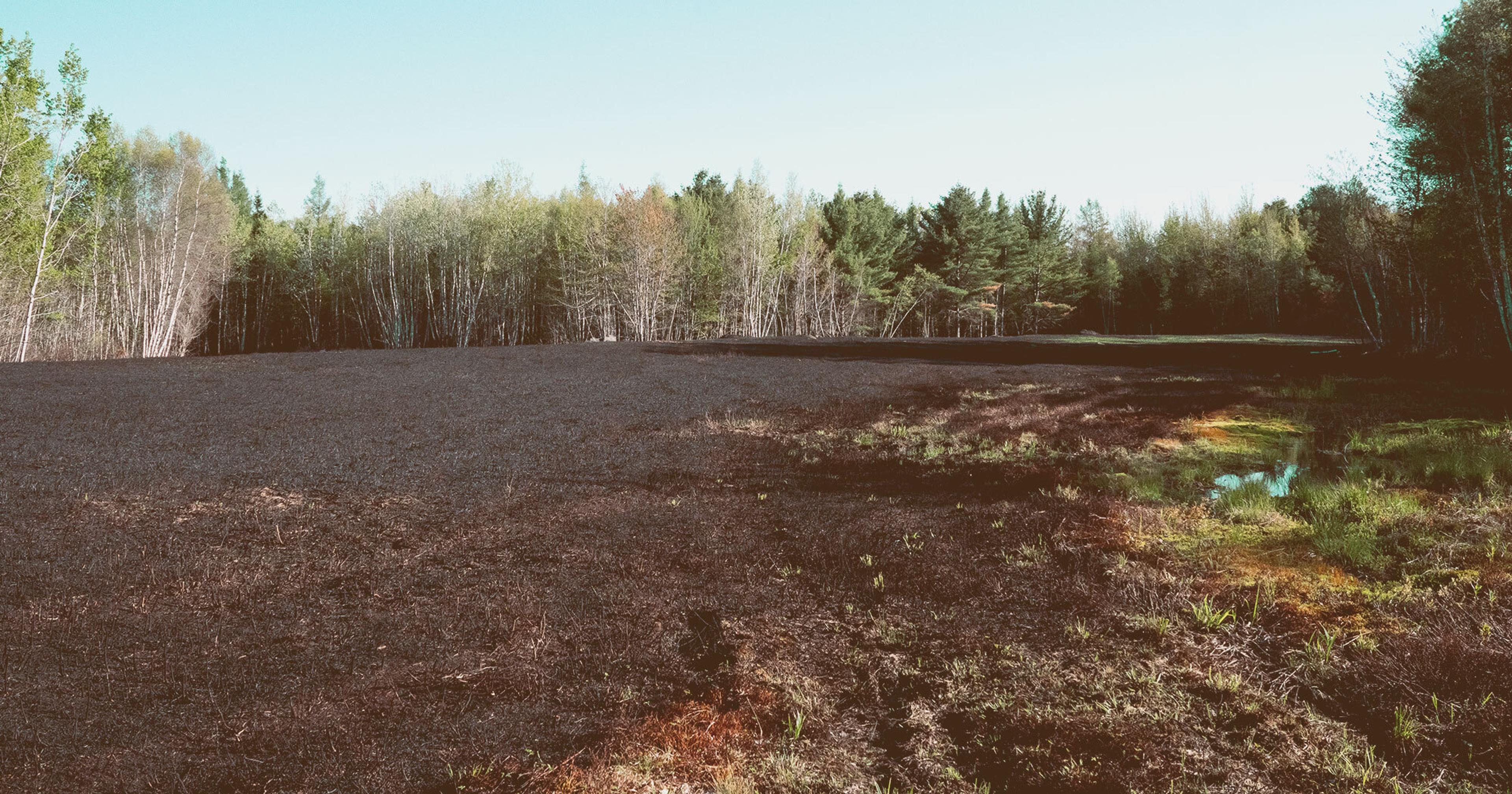
A burned field at Lynch Hill, regenerating for next year's harvest.
·Kat Arazawa
At the Passamaquoddy Wild Blueberry Co., a Native American-owned business in Columbia Falls, Maine, general manager Darren Paul and product manager Holli Francis have found their own way to branch out from the standard wild blueberry model. With help from a U.S. Department of Agriculture value-added producer grant, the company now keeps 20 percent of the berries grown on its 2,000 acres of tribal trust land to sell wholesale or freeze-dried under its own brand, while the rest are sold to Wyman’s. That control over a portion of its own crop makes Passamaquoddy a rarity in the industry, helping it return around $3 million in profit over the past five years to support the Tribe, Francis says. The company’s unique status in the industry is fitting, considering that the Passamaquoddy are among the five tribes of the Wabanaki Confederacy and their connection to the blueberry extends back thousands of years.
The Tribe bought its blueberry fields in 1981, in large part to preserve work for its members, Paul says. The Passamaquoddy have a migratory history, moving from harvest to harvest throughout the region. Blueberry season used to bring thousands of members from the Tribe and its relatives across Maine and the Maritimes to hand-rake the crop. Now, as with most of the industry, mechanized harvesters have taken over much of the work. Still, the barrens are peppered with shacks that house workers each summer, where the fields have long taken on the spirit of a family reunion.
“It’s a tough business,” Paul says. “It’s weather-dependent and you’re not going to get a good crop every year.”
That reality is helping to drive the industry’s existential crisis, with so many growers questioning whether to keep giving themselves over to a crop that doesn’t always give back.
“It would be sad,” Francis says of the prospect of fields gone fallow. “Blueberries are Maine.”
A short drive from the first blueberries his grandparents bought, Hammond pulls up to a charred field that he burned last week, just as the Wabanaki once did to reset the blueberries for a prune year. Most farms have transitioned to flail mowing to restart the plant’s two-year cycle, running a tractor through their fields with blades sturdy enough to cut down the thick carpet of blueberries. But Hammond spent most of his adult life as a Maine forest ranger, so the traditional method comes naturally to him.
As his black boots crunch through the ashes, he ponders why he and his fellow growers stay loyal to their blueberries, despite everything they face. It’s in his nature to keep going, he says. “It’s what we do.” Next spring, these blueberries will return, just as they have for thousands of years, and Hammond will be back for more.


